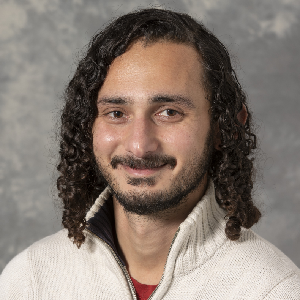
Title:
Novel somatic mutant IDH glioma model identifies high-risk patients with distinct copy number and tumour microenvironment alterations
Aditya Shroff1, Yu-Jui Ho2, Guidantonio Tagliazucchi9, Felipe Galvez Cancino3, Melanie Clements4, Timour Baslan2, Gordon Beattie5, Sergio Quezada3, Thomas Jacques6, Nada Jabado7, Simona Parrinello4, Paolo Salomoni8*, Maria Secrier9*, Scott Lowe2,10*, Henning Walczak1,11*
Abstract:
Gliomas are among the most lethal human neoplasms, in part due to their marked heterogeneity. Molecular classifications of patient tumours linked majority of adult diffuse low-grade gliomas (LGG) to gain-of-function mutations in the isocitrate dehydrogenase (IDHMut) genes, which alter the tumour epigenome via their neomorphic enzymatic function. Due to the lack of precise autochthonous preclinical progression models, there is limited understanding of the biology of the oncogenic mutant IDH-driven function in LGG, and the heterogenous crosstalk with the tumour microenvironment (TME). Here, we employed postnatal brain electroporation to develop a slowly progressing somatic mutant IDH1 (IDH1R132H; IDH1mut) murine model reminiscent of LGG patient tumour development. We show that mutant IDH1, combined with loss of the tumour suppressor protein 53 (p53) and α-thalassemia/mental retardation syndrome X-linked (Atrx) genes, is sufficient to drive formation of diffuse gliomas with resulting tumours recapitulating the histopathological and molecular hallmarks of mutant IDH-astrocytomas (IDH-A) patient tumours, especially, the copy number alteration. Multi-omic based molecular characterization and data integration led to the identification of the epigenetic silencing of the targets of the polycomb regulator EZH2 and the altered composition of the TME. Applying the novel murine signature to the genomic and transcriptomic datasets derived from patient tumours, we identified a previously unrecognized subgroup of IDHMut and IDH-A tumours with significantly enriched immune-TME accompanied by distinct somatic copy number alterations. Collectively, our results provide insights into IDH-A pathogenesis, intrinsic tumour characteristics associated with TME heterogeneity and uncovering an opportunity for IDHMut-patient stratification with prognostic value.
1UCL Cancer Institute, University College London, Centre for Cell Death, Cancer and Inflammation, London, United Kingdom, 2Memorial Sloan Kettering Cancer Center, Cancer Biology & Genetics Program, New York, NY, 3UCL Cancer Institute, University College London, Cancer Immunology Unit, Research Department of Haematology, London, United Kingdom, 4 UCL Cancer Institute, University College London, Neurogenesis Samantha Dickson Brain Cancer Unit, London, United Kingdom, 5UCL Cancer Institute, University College London , Genomic Core, London, United Kingdom, 6GOS Institute of Child Health , Developmental Biology & Cancer , London, United Kingdom, 7McGill University Health Centre, Pediatrics and Human Genetics, Montréal, Canada, 8German Center for Neurodegenerative Diseases (DZNE), University of Bonn, Bonn, Germany, 9University College London, Genetics Institute, Div. of Biosciences, London, United Kingdom, 10Howard Hughes Medical Institute, , New York, NY, 11Institute of Biochemistry I, University of Cologne, Cologne, Germany
Bio:
Aditya Shroff, Ph.D., is a postdoctoral fellow at the University College London (UCL), Cancer Institute in Henning Walczak’s laboratory. He has been working with in vivo cancer models throughout his scientific career. Early, during his bachelor’s at Stony Brook University, NY he identified his passion for research as a volunteering student at Brookhaven National Laboratory. This drove him to develop a deeper understanding of different cancer modelling approaches, first, as a research technician working on mutant IDH leukemias and liver cancer mouse models in Dr. Scott Lowe’s laboratory at MSKCC, and recently, he developed challenging new murine glioma models.
During his Ph.D. at UCL, Aditya was successful in generating slow progressing novel somatic mutant IDH-driven glioma mouse models employing in vivo brain electroporation. With continued collaborations with Dr. Lowe and experts from Bonn and London, he has generated a comprehensive multi-omic platform to understand the role of mutant IDH. Currently, he is exploring the limits of the versatility of his modelling approach and its translational impact in glioma patient classifications and targeted therapies. His work proposes exploring the TME in murine glioma modelling and investigating a patient stratification approach to identify tumour vulnerabilities in these heterogeneous gliomas.
